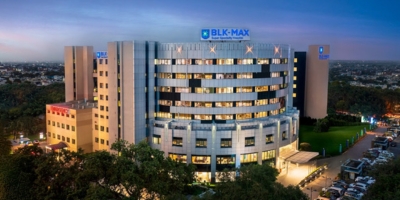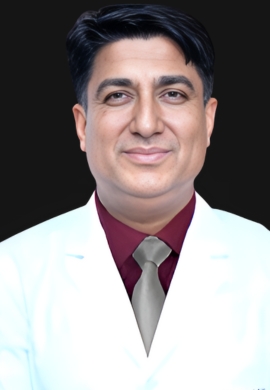Bone Marrow Transplant for Sickle Cell Disease in India: Cost & Success Rate
Explore Bone Marrow Transplant for Sickle Cell Disease in India at low costs. Learn about success rates, best hospitals, and specialists.
Fight this deadly genetic disorder today!
Cost of Bone Marrow Transplant for Sickle Cell Disease in India
The cost of a bone marrow transplant for sickle cell disease in India ranges from $18,000 - $45,000, exclusive of donor registry if required.
The cost of the same in the US ranges from USD $120,000[1] to $250,000[2].
Below is a table to elaborate:
| Transplant Type | Detail | Cost in India | Cost in the US |
| Autologous transplant or gene therapy | The patient's own stem cell is genetically modified and inserted back. | $18,000-$20,000 | $120,000 |
| Allogenic transplant | External donor with a perfect match. | $30,000 - $35,000 | $150,000 to $250,000 |
| Haplo- Allogenic transplant | External donor with a partial match. | $40,000 - $45,000 |
Allogenic transplants, where the patient requires an unrelated donor through the donor registry, are more expensive.
In India, the cost of such a bone marrow transplant is around $70,000 to $75,000; in the US, it is way over $250,000.
A bone marrow transplant is a good option in India for treating most blood-related diseases, immune disorders, and genetic disorders.
Read the complete guide to Bone Marrow Transplant for Leukemia in India
Procedure: Get Bone Marrow Transplant for Sickle Cell Disease in India
With low costs, haematology experts and advanced technology, India is leading to become one of the most reliable bone marrow transplant destinations for patients.
Find out how international patients in India can get treated for sickle cell disease using a bone marrow transplant.
First Touch Point With Our Medical Advisors
Our medical tourism advisors connect with international patients and help them find the right fit for a bone marrow transplant program. First, patients share initial reports with our advisors. The reports include:
- Gene tests
- Initial scans
- Existing lab reports
- High-resolution HLA reports
Low-resolution images will not give doctors accurate results.
If you do not have existing medical reports, do not worry—our team will help you.
All you need to do is contact us and let us guide you.
Why Is HLA Important for Bone Marrow Transplant?
Human Leukocyte Antigen (HLA) is a type of gene in our body[3]. To get a stem cell or a bone marrow transplant, the patient's HLA count must match the donor's HLA. If stem cells from an unmatched HLA enter the patient's body, the immune system thinks of them as a foreign entity and fights them. If the HLA matches perfectly, the patient's body will accept the healthy bone marrow and recover.
Identifying the Right Donor Is the Key!
After finding you the right bone marrow transplant program, specialists examine initial reports and plan for treatment.
Here, the type of donor is decided.
| Donor Type | Who it can be | Matching level |
| Allogeneic | Sibling | Complete match |
| Haplo- Allogeneic | Parent, Child, Relative | Partial match (50%) |
| Allo- ‘Matched Unrelated Donor’ | Non-related, from the Donor Registry | Complete Match |
- Usually, a sibling is a perfect HLA match for an allogeneic transplant.
- A partial match (Haplo-allogenic) donor may work if there are no siblings. Studies have shown that this donor has a higher risk of rejection.[4]
- To combat this, patients can try the global donor registry and find a ‘matched unrelated donor’; this process is expensive but gives patients a greater chance of finding a good match.
Are There Other Donor Options if HLA Does Not Match With Relatives?
Our partner hospitals in India keep a donor registry where umbilical donor blood is stored. The umbilical cord contains immature stem cells that can be used to produce healthy marrow.[5]
Once the donor is identified, a bone marrow transplant and the patient’s India visit are scheduled.
Travel to India for Bone Marrow Transplant
Before a bone marrow transplant, the patient requires 2-3 sessions of chemotherapy to kill the abnormal stem cells. This is called Induction. The patient can get this done in their home country or India.
Here is the timeline for the treatment.
| Phase during the treatment | Duration |
| Pre-Transplant | 1 month |
| Main procedure | 35 Days (patient stays in hospital) |
| Post-Transplant | 3 Months (mandatory) |
Once the treatment timeline is fixed, our medical advisors ensure all travel-related documents are processed seamlessly.
Patients are connected with a specific point of contact who handles the overall journey. Once in India, the doctor prepares for the treatment.
How to Reach India?
You can reach the capital of India, New Delhi, by taking flights to Indira Gandhi International Airport. This is one of the finest airports in the world with numerous inbound and outbound flights globally.
| City/Country | Airlines | Availability of direct flights | Flight Time | Cost in USD |
| Lagos, Nigeria | Ethiopian Airlines | No, minimum 1 stop | 14 hours | $593 |
| Qatar Airways, Indigo | 15 hours 55 min | $600 | ||
| Egypt Air | 39 hr 10 min | $686 | ||
| Kinshasa, Congo | Ethiopian Airlines | No, minimum 1 stop | 14 hr 55 min | $582 |
| Turkish Airlines/Indigo | 23 hr 5 min | $784 | ||
| Kenya Airways | 15 hr 5 min | $814 | ||
| Yaounde, Cameroon | Ethiopian Airlines, Air India | No, minimum 1 stop | 13 hr 20 min | $825 |
| Turkish Airlines/Indigo | 23 hr 30 min | $1090 | ||
| Air France | 18 hr 10 min | $1723 | ||
| Accra, Ghana | Emirates | No, minimum 1 stop | 21 hr 30 min | $456 |
| Ethiopian Airlines, Air India | 14 hr 20 min | $586 | ||
| Qatar Airways, Indigo | 18 hr 20 min | $554 |
Process of Getting a Bone Marrow Transplant
Most bone marrow transplant procedures are similar across all blood-related disorders and some immuno-genetic diseases. Here is a breakdown of how patients receive a bone marrow transplant.
Preparation with Intense Therapy:
High doses of chemotherapy and radiation are given to treat cancer and create space in the bone marrow. This therapy stops bone marrow cell production, leaving it empty.
Transplant Process:
Bone marrow transplant is delivered through the central venous catheter into the bloodstream, similar to a blood transfusion. Stem cells find their way into the bone marrow, growing new, healthy blood cells.
Post-Transplant Care:
The patient stays in isolation for 35 days in intensive care for observation. Supportive care includes preventing and treating infections and side effects.
Regular blood tests, vital sign monitoring, fluid measurement, daily weigh-ins, and maintaining a clean environment are essential.
Pros and Cons for Bone Marrow Transplant
| Pros | Cons |
| Healthy bone marrow treats the sickle cell from the core | Risk of serious Graft vs. host disease where the patient's body rejects foreign substances. |
| Restores the Immune system and helps it become strong | Long and tedious process |
| Reduces ongoing chemotherapy, which can lead to multiple side effects | Infection due to weak immune system |
| Gets the patient healthy | Expensive treatment |
Overview of Sickle Cell Disease and Bone Marrow Transplant
Let us look at the global overview of sickle cell disease and how it can be treated.
What Is Sickle Cell Disease
Sickle Cell Disease is a genetic disorder that affects red blood cells (RCB). The affected RCBs, which carry oxygen around the body, are not shaped properly.[6] Instead of being round and flexible enough to pass through the bloodstream, they're shaped like sickles.
The gene mutation that causes the shape of the RBCs to change blocks the bloodstream and hinders oxygen flow through the body, causing numerous issues. The disease can also be fatal.
Why Is Bone Marrow Transplant Used To Treat Sickle Cell Disease?
Stem cells live inside the bone marrow, which produces RBCs. In a patient with Sickle Cell Disease, the RBCs are damaged and unhealthy. The disease can be treated at the core by replacing the bone marrow, which is a factory of RBCs.
How Does It Work?
After examining the patient reports, a donor is identified. Healthy bone marrow is taken from the donor and put into the patient's body. This is called an allogeneic transplant. Another way to treat sickle cell disease is through an autologous stem cell, bone marrow transplant, or gene therapy. This takes the mutated gene in the patient's body, fixes it, and injects it back into the patient.[7]
This healthy bone marrow starts making good RBCs, and over time, the patient recovers.
Global Perspective on Sickle Cell Disease
Sickle cell disease is mostly found in the Sub-Saharan Africa region. Given that Nigeria has the highest prevalence of sickle cell disease globally, the disease is identified as a major healthcare issue.[8]
The incidence of sickle cell disease ranges from 20% to 30%[9] in Cameroon, the Democratic Republic of the Congo, Gabon, Ghana, and Nigeria. A high prevalence of 45% has also been reported in some parts of Uganda.[10]
The condition affects more than 100,000 people in the United States and 20 million worldwide. In the United States, most people who have sickle cell disease are of African ancestry or identify themselves as Black.[11]
Why India?
According to a United Nations report, Sub-Saharan Africa faces a severe shortage of healthcare professionals and lacks adequate healthcare coverage for those needing medical treatment.[12]
At the same time, countries in the West, like the US, face the challenge of exorbitant healthcare costs.
This is where India comes into the picture as an ideal destination to get treated for sickle cell disease.
According to the United Nations, India boasts highly qualified doctors, state-of-the-art equipment, and treatments approved by the World Health Organization and the US Food and Drug Administration.[13]
In India, patients from African countries and even Western countries can receive quality healthcare at affordable prices.
Success Rate of Bone Marrow Transplant for Sickle Cell Disease in India
The overall success rate of bone marrow transplant for sickle cell disease in India is 90%.[14] According to research conducted by Indian scientists and published in NIH, the survival rate was 90%, and event-free survival was 76%.
Best Hospital for Bone Marrow Transplant for Sickle Cell Disease in India

The JCI-accredited facility is one of the largest private clinics in Delhi and ranks among the top 10 multi-specialty hospitals.
As part of the Max Healthcare Group, a leading provider in India, it caters to both domestic and international patients.
The hospital specializes in cancer treatment, bariatric surgery, and cardiology, using advanced equipment that meets European hospital standards.
- 60+ Years of Experience
- JCI Accredited
- NABH Accredited
Largest Bone Marrow Transplant units in Asia
Over 2400 transplants annually
First hospital in Delhi & NCR to have Blood Irradiator facility specific to Leukemia
Partnered with Renowned Global Bone Marrow Donor Registry
Registry of Umbilical cord blood
A state-of-the-art Blood Bank with facilities like Apheresis, Blood Component Separation and Stem Cell Harvesting
Nucleic Acid Testing System for screening of blood
Best Specialist for Bone Marrow Transplant for Sickle Cell Disease in India

Dr. Dharma Choudhary
Dr. Dharma Choudhary is a leading bone marrow transplant physician and hematologist in India.
He is the Vice Chairman of the Centre for Bone Marrow Transplant at BLK-Max Hospital in New Delhi.
He completed a fellowship in leukemia/BMT at Vancouver General Hospital and BC Cancer Agency.
With over 2,000 life-saving transplants, he is highly regarded in his field.
Educación
AIIMS, New Delhi, India
Membresías
- American Society of Blood and Marrow Transplant
- Life Member of Indian Society of Haematology & Transfusion Medicine
Is Bone Marrow Transplant for Sickle Cell Disease Safe in India?
Yes, bone marrow transplant for sickle cell disease is safe in India, thanks to advanced technology, renowned JCI-accredited hospitals, and experts with decades of experience in hematology.
Bone marrow transplant is safest when a matched donor is available; however, as per the National Health Institute, even with a suitable donor, there is still a 9% risk of rejection of a foreign body.[15]
Conclusion
Bone marrow transplants for sickle cell disease in India is steadily becoming an option for international patients.
Get safe and affordable treatment from hematological experts in top JCI-accredited hospitals.
Fight the genetic disorder today.
Contact us!
FAQ
According to a study in India by the American Society of Hematology, bone marrow transplant is currently the only curative option available for sickle cell disease.
People with sickle cell disease, other blood-related disorders, and some immune or genetic disorders can be eligible for a bone marrow transplant. The patient's and the donor's HLA count must match for eligibility. Tests are conducted before doctors recommend the treatment. Contact us to know your eligibility.
References
- National Library of Medicine: A Budget Impact Analysis of Gene Therapy for Sickle Cell Disease
- American Society of Hematology: Comparative Cost Analysis of Therapy in Sickle Cell Anemia: Supportive Care Vs Bone Marrow Transplant
- National Cancer Institute: Human Leukocyte Antigen
- National Library of Medicine: Haploidentical Stem Cell Transplantation in Adult Haematological Malignancies
- National Library of Medicine: Haploidentical Stem Cell Transplantation in Adult Haematological Malignancies
- National Heart, Lung, Blood Institute: What Is Sickle Cell Disease?
- National Library of Medicine: Autologous Stem-Cell-Based Gene Therapy for Inherited Disorders: State of the Art and Perspectives
- National Library of Medicine: Impact of Sickle Cell Disease on Affected Individuals in Nigeria: A Critical Review
- National Library of Medicine: A Critical Review of Sickle Cell Disease Burden and Challenges in Sub-Saharan Africa
- National Library of Medicine: A Critical Review of Sickle Cell Disease Burden and Challenges in Sub-Saharan Africa
- National Heart, Lung, Blood Institute: What Is Sickle Cell Disease?
- United Nations: African Renewal: India’s medical tourism gets Africans’ attention
- United Nations: African Renewal: India’s medical tourism gets Africans’ attention
- National Library of Medicine: Allogeneic hematopoietic stem cell transplantation to cure sickle cell disease: A review
- National Library of Medicine: Hematopoietic Stem Cell Transplantation in Sickle Cell Disease




